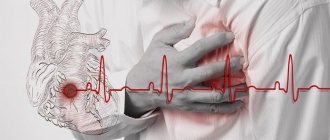Vegetative-vascular dystonia: to treat or not to treat?
The disease itself, as well as its symptoms, have been known for a long time.
VSD in adolescents is successfully diagnosed, but an unambiguous method of treating the disease has not yet been found, since doctors have not yet been able to fully decipher the pathology itself. So far, doctors have more complete information only about the peripheral effects of neurological problems in the regulation of cardiac and vascular activity. However, it is still not clear how infections influence the onset and course of the disease.
At the moment, most experts are inclined to consider the main and most common cause of vegetative-vascular dystonia in adolescents to be stress.
The treatment method depends on the cause of the disease. Since stressful situations are considered the main ones, drug treatment for VSD is practically not carried out. Prevention measures and treatment are limited to reducing the number of stressful situations, improving the general emotional state and redistributing mental stress.
However, with exacerbation of vegetative-vascular dystonia, it is possible to use medications in therapeutic doses. Such methods stop attacks of vascular disorders and normalize the teenager’s condition.
The flexibility and adaptability of a teenager’s nervous system is one of the reasons why doctors look at the manifestation of symptoms of the disease without much alarm. In young children, the processes occur even faster and easier, therefore, the prognosis is usually favorable.
Prevention of vegetative-vascular dystonia in children and adolescents
Vegetative-vascular dystonia in adolescents and young children can be practically asymptomatic, especially if adults pay due attention to the prevention of VSD.
We are talking about leading a healthy lifestyle, playing sports at both an amateur and professional level, diet, as well as sleep and wakefulness. For better vascular condition, it is necessary to diversify your diet by adding more fiber and vitamins, as well as foods containing potassium and magnesium. But it is better to exclude fatty and fried foods or at least reduce their consumption to a minimum. The reason for avoiding thermally processed fats is the risk of developing atherosclerotic processes. Naturally, during this period it is best to increase the child’s time in the fresh air.
Causes of the disease
VSD in adolescents is usually the result of uncoordinated development of various body systems at this age. There is a pronounced contrast between body growth and changes in the cardiovascular and nervous systems in children. Against this background, the autonomic nervous system ceases to perform its function sufficiently, which leads to the appearance of symptoms of several diseases at once, which usually at other ages occur as separate, unrelated diseases. The onset of vegetative-vascular dystonia in adolescents most often occurs at 14-16 years of age.
Puberty is a difficult time for boys and girls, when there is increased production of hormones and the body finds it difficult to cope with a large number of biologically active substances. Their excess affects the emotional state of the child, which is closely related to the work of the autonomic nervous system. Against this background, vegetative-vascular dystonia can also develop. As a rule, if a child is anxious, has difficulty adapting to a team, and is susceptible to stressful conditions, there is a high probability of this illness occurring.
Changes in body temperature
As noted above, vegetative-vascular dystonia in adolescents has a huge list of different symptoms. However, an important indicator that the disturbances are not caused by more serious diseases requiring immediate medical attention can be the absence of fever.
The combination of several common symptoms of VSD and elevated temperature indicates the presence of an infection or a source of inflammation in the body. Naturally, only an experienced doctor can diagnose an infection and promptly begin treatment of an infectious disease. Therefore, at the first signs of an increase in temperature, you should seek medical help rather than try to relieve the symptoms on your own.
Treatment of vegetative-vascular dystonia with the drug Eltacin®
Eltacin® is a combination drug that contains three essential amino acids: glycine, cystine and glutamic acid. Together they stimulate the synthesis of glutathione in the body, a substance that affects not only the symptoms of VSD in children, but also the cause itself.
Each amino acid included in the drug has its own properties.
- Cystine .
Stimulates the production and controls the biological activity of many protein compounds and hormones, the most important of which in autonomic dysfunction syndrome in children and adolescents are vasopressin (among others, regulates aggressive behavior) and oxytocin (forms warm relationships and affection). - Glutamic acid .
It is a neurotransmitter and improves the functioning of brain cells. - Glycine
. This amino acid in the composition of the medicine helps regulate metabolism, normalize the functioning of the nervous system, relieve psycho-emotional stress, eliminate conflict and aggressiveness. Glycine improves mood and memory, increases mental performance, and normalizes sleep.
Eltacin® can be taken by adults and children over 11 years of age.
Methods of drug treatment of VSD in adolescents
The main way to relieve painful conditions associated with exacerbation of vegetative-vascular dystonia in adolescents and young children is to reduce stress levels and develop stress resistance as a method of resisting neuroses. Despite this, for more complex manifestations and symptoms such as regular headaches, fainting, sleep disorders, lack of appetite, tearfulness and irritability, decreased emotional background, the doctor may prescribe a course of the following medications:
- sedatives that calm the nervous system;
- antidepressants that improve the overall emotional state;
- complexes of vitamins and minerals that strengthen the body as a whole.
Treatment is carried out only under the supervision of a neurologist and only after an examination that can reveal abnormalities in the condition of the circulatory system.
With age, most symptoms of vegetative-vascular dystonia in adolescents go away on their own. However, one cannot rely only on this. By using the full range of preventive methods, you can reduce the need for treatment or make it more gentle, but you cannot completely eliminate the use of medications or follow general recommendations. General recommendations include:
- timely diagnosis and treatment of any infectious diseases;
- establishing and maintaining a daily routine;
- proper distribution of the load over a certain period of time to reduce fatigue;
- regular walks and outdoor activities;
- reducing time spent on a computer, tablet, phone;
- high-quality and regular massage - therapeutic and relaxing;
- monitoring intracranial pressure and the condition of the spine, including posture correction.
Exacerbation of vegetative-vascular dystonia in adolescents can cause temporary exemption from physical education, as well as a reason for registering with a neurologist. In addition, regular examination helps to identify VSD in adolescents during the “lull” period and promptly prescribe treatment for the vascular system.
Features of diagnosis and course of VSD in children
Children suffer the symptoms of vegetative-vascular dystonia much more severely than adults, and it is more difficult to diagnose the disorder in them. Firstly, this is due to the fact that they cannot always say exactly what is bothering them and for how long. Secondly, the amplitude and HR (heart rate) are established in children by approximately twelve years. This makes early diagnosis significantly difficult. Therefore, parents should promptly contact a pediatrician if the child has the following symptoms of VSD: frequent runny nose, chest pain, chills (even if it is warm outside and indoors), slow or fast heartbeat, headache, complaints of stuffiness, fatigue, heat . The doctor will select the appropriate medicine taking into account the child’s age, the characteristics of the course of VSD, the severity of symptoms, etc.
Diagnosis of VSD
The initial stage of the examination is the collection of a detailed medical history. The doctor needs to know almost everything about the little patient:
- age;
- features of intrauterine development, birth and the first years of life;
- past illnesses and surgeries;
- frequency of diseases per year;
- completed treatment;
- environmental situation in the place of residence.
The specialist needs to painstakingly collect all available information, including observations of parents, complaints of the child himself, and lifestyle features.
After collecting an anamnesis, a general examination is carried out, during which the doctor assesses the condition of the skin, mucous membranes of the nose and oral cavity, lymph nodes and other visible structures.
The next stage of diagnosis is laboratory and instrumental examination methods. Depending on the direction of symptoms and complaints, the following are performed:
- a set of laboratory tests of blood and urine;
- Ultrasound;
- MRI or CT;
- breath tests;
- allergy tests;
- EchoCG and ECG;
- electroencephalography;
- fluoroscopy.
Additionally, the attending physician can refer the child to a consultation with an ophthalmologist, surgeon, urologist, gynecologist, or otolaryngologist.
Classification of autonomic disorders
Depending on the intensity, origin, and nature of autonomic disorders, several subgroups of VSD are distinguished.
Depending on the cause, psychogenic, hereditary, infectious and dyshormonal forms of vegetative-vascular dystonia are distinguished; in some cases, children have a mixed type of VSD, which is characterized by a combination of several causes of symptoms.
According to the nature of the disorders, the syndrome is:
- sympathicotonic, when the disorder is expressed in restless, overly emotional and even aggressive behavior;
- vagotonic, which manifests itself in the form of chills, increased or decreased body temperature, dizziness, sensation of a foreign body in the throat;
- combined, when there is no clear predominance of certain symptoms.
There are also systemic, local and generalized forms of pathology according to the degree of prevalence of disorders. According to the severity of VSD disorders, there are mild, moderate and severe forms.
Prevention of VSD
General strengthening measures, timely vaccination, and prevention of potential risk factors will help prevent the occurrence of vegetative-vascular dystonia in childhood and adolescence. Experts recommend not overloading young children with excessive activities, and providing teenagers with comprehensive assistance in their studies and creativity.
It is important to closely monitor the child’s health, not to try untested or questionable methods in the child’s therapy, and not to give narrow-spectrum drugs as self-medication.
If you suspect VSD, contact a professional: our specialists will find the cause of autonomic disorders, select an individual treatment regimen and corrective techniques, taking into account all the characteristics of your child.
Autonomic dysfunction syndrome in adolescents
The sinus node is responsible for maintaining the correct rhythm of contractions of the heart muscle. During adolescence, when the autonomic nervous system cannot cope with its function and this affects the functioning of the node, disturbances in the rhythm of the heart, such as arrhythmias, may appear.
Deviations in the activity of the heart muscle are called autonomic dysfunction of the sinus node. This is a fairly common occurrence in adolescence. It can manifest itself in varying degrees - from mild symptoms, such as a slight change in the rhythm of heart fluctuations, fatigue, causeless bad mood, to serious disturbances in cardiac function that are dangerous to the health and life of the patient.
When autonomic dysfunction syndrome during puberty is mild, doctors often tend to choose non-intervention tactics and only monitor the child. As a rule, in many cases the function of the nervous system improves, and the disease goes away on its own. But if the manifestations of autonomic dysfunction are serious and affect the quality of life of a teenager, then medication and, in especially severe cases, surgical treatment are clearly indicated.
Causes
Socio-economic:
- Accelerated pace of development of civilization.
- Adaptation to new living conditions.
- Introduction of new products and household chemicals.
- Acceleration of work rhythms.
- Mental overload from increased information flows.
- Stress factors at school and family.
Genetic predisposition of the body to various diseases that can provoke disturbances in the activity of the vascular and autonomic systems.
Symptoms of vegetative-vascular dystonia
VSD syndrome can be of a constitutional nature, occurs against the background of endocrine changes, or develops with organic lesions of the central nervous system. Signs of constitutional VSD are:
- sweating;
- rapid change in skin color;
- fluctuations in heart rate and blood pressure;
- causeless rises in temperature to 39.0-37.10.
Patients do not tolerate physical and mental stress and changing weather conditions well.
The VSD syndrome, which developed during puberty against the background of endocrine dysfunction, is characterized by the following manifestations:
- vegetative-vestibular crises, which begin with dizziness and occur with a predominance of vagoinsular symptoms;
- hunger, thirst, libido;
- thermoregulation disorders, pathological paroxysmal drowsiness;
- attacks of temporal lobe epilepsy.
Hypothalamic syndrome is characterized by various combinations of autonomic, endocrine, metabolic and trophic disorders, which are caused by damage to the hypothalamus and its closest connections. Characteristic symptoms of VSD in women in the acute stage:
- ·early menopause;
- changes in the thyroid gland of hypothalamic origin;
- acromegaloid phenomena.
The electroencephalogram reveals changes that indicate the involvement of deep brain structures in the process. Damage to the hypothalamus is characterized by sleep and wakefulness disorders in the form of difficulty falling asleep, drowsiness during the day and superficial restless sleep at night.
When the connections between the hypothalamus and the temporal lobes of the brain are damaged, symptoms of temporal lobe epilepsy appear:
- aura 1–3 minutes with sensations of peristalsis, nausea, abdominal pain;
- pain in the heart area, rapid heartbeat, arrhythmia;
- labored breathing;
- increased salivation;
- involuntary chewing, swallowing;
- sweating followed by loss of consciousness and tonic-clonic convulsions.
If connections with the brain stem are affected, neurologists determine dilation of the pupils, dysfunction of the reticular formation with signs of narcolepsy, a neurological disorder in which a person loses the ability to control his own condition), cataplexy (a state of sudden loss of muscle tone while fully maintaining consciousness). Patients' sleep and wakefulness are disturbed.
The similarity of some symptoms of VSD with signs of endocrine diseases is the reason why doctors at the Yusupov Hospital conducted additional examinations. The manifestation of adrenergic crises creates the need to exclude pheochromocytoma. To exclude it, patients undergo suprarenography, pyelography, computed tomography, and scintigraphy. A urine test is performed during an attack to determine the level of catecholamines.
With VSD, there are no organic changes in all body systems; at the same time, functional disorders are determined, especially in the cardiovascular and digestive systems. Symptoms of VSD are most pronounced during an exacerbation.
Patients present the following complaints:
- weakness, fatigue, lethargy, especially in the morning;
- unpleasant sensations, discomfort or stabbing, pressing, burning, squeezing pain in the heart area of varying intensity;
- sensations of lack of air, dissatisfaction with inhalation, cough;
- anxiety, sleep disturbances, restlessness, irritability, excessive concentration of attention on the unpleasant symptoms of one’s illness;
- frequent headaches, dizziness;
- increased sweating;
- lability of blood pressure and vascular tone.
Depending on the prevailing changes in vascular tone, normotensive, hypotensive, hypertensive and mixed types of vegetative-vascular dystonia are distinguished. With the hypotonic type of VSD, signs of vascular insufficiency come to the fore. Blood pressure is below 100/60 mmHg. The patient is concerned about rapid fatigue, weakness, and a tendency to change blood pressure when moving the body from a horizontal to a vertical position. Fainting often occurs, preceded by darkening of the eyes and dizziness.
With the hypertensive type of VSD, blood pressure rises to more than 140/90 mm Hg. The leading complaints are:
- headache;
- fast fatiguability;
- rapid heartbeat, up to paroxysmal tachycardia.
In the area of the heart, areas of increased pain sensitivity are sometimes identified. Hypotonic and hypertensive types of VSD are accompanied by redness of the skin of the neck and face, coldness of the extremities, and marbling of the skin pattern.
If the patient is bothered by pain in the heart area, sometimes sharp, burning, stabbing, often poorly localized, palpitations, a feeling of interruptions in the work of the heart - this is a cardiac type of VSD.
Prevention measures
How to reduce attacks of loss of consciousness or get rid of them completely? To do this you need:
- completely give up alcohol and nicotine, which overstimulate the nervous system (which is already difficult when diagnosed with VSD);
- regulate night rest, and during the day try not to sleep for more than 30-40 minutes;
- alternate different types of activity: exercise-walk-work-rest;
- avoid physical and mental fatigue;
- When indoors, make sure that enough fresh air enters the windows;
- avoid stressful situations, excessive worries;
- perform feasible yogic exercises, breathing exercises (pranayama), visit the pool;
- walk for a long time in the forest or park;
- temper with cool dousings;
- use relaxing baths, massage and self-massage, aromatherapy.









